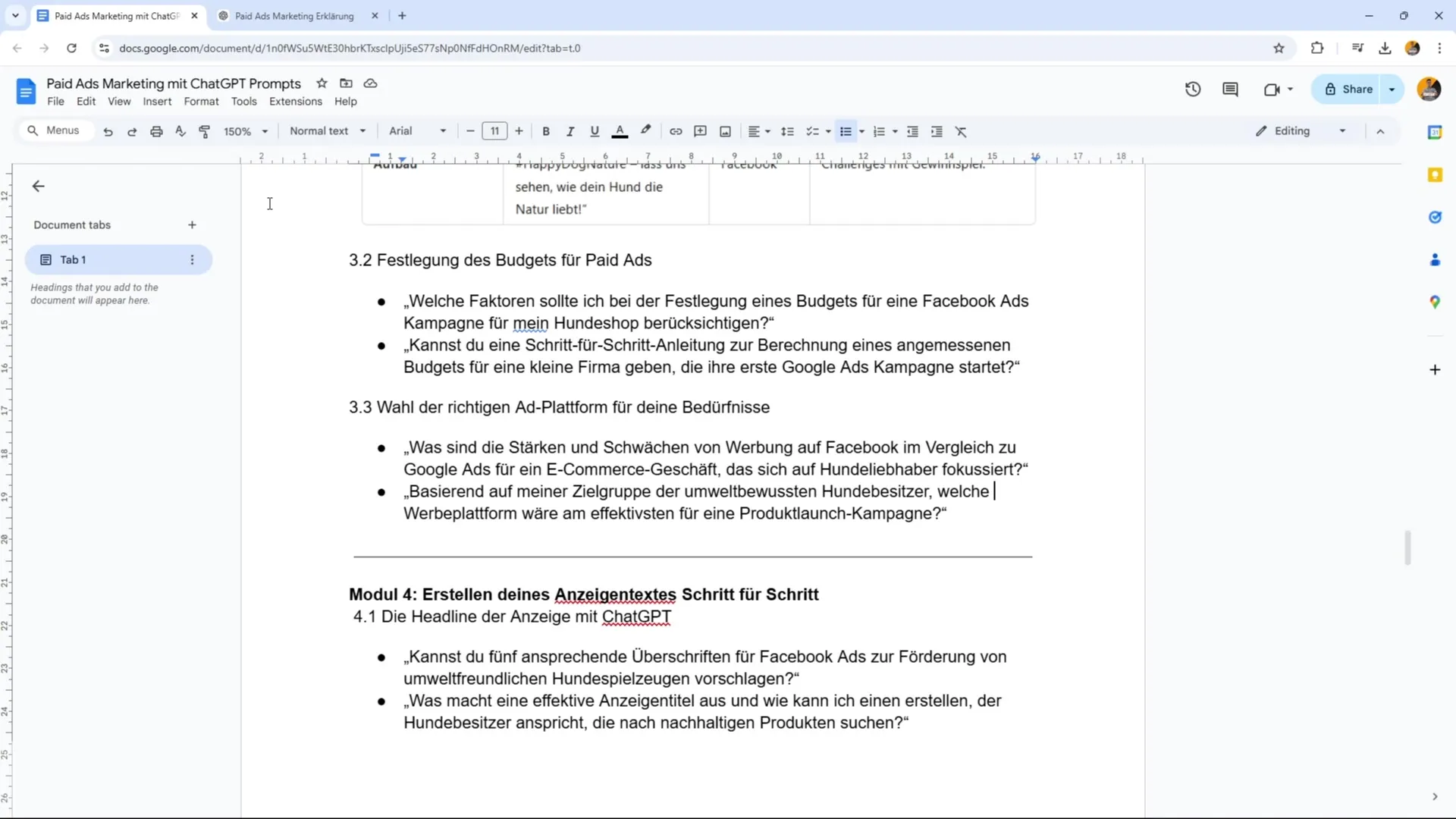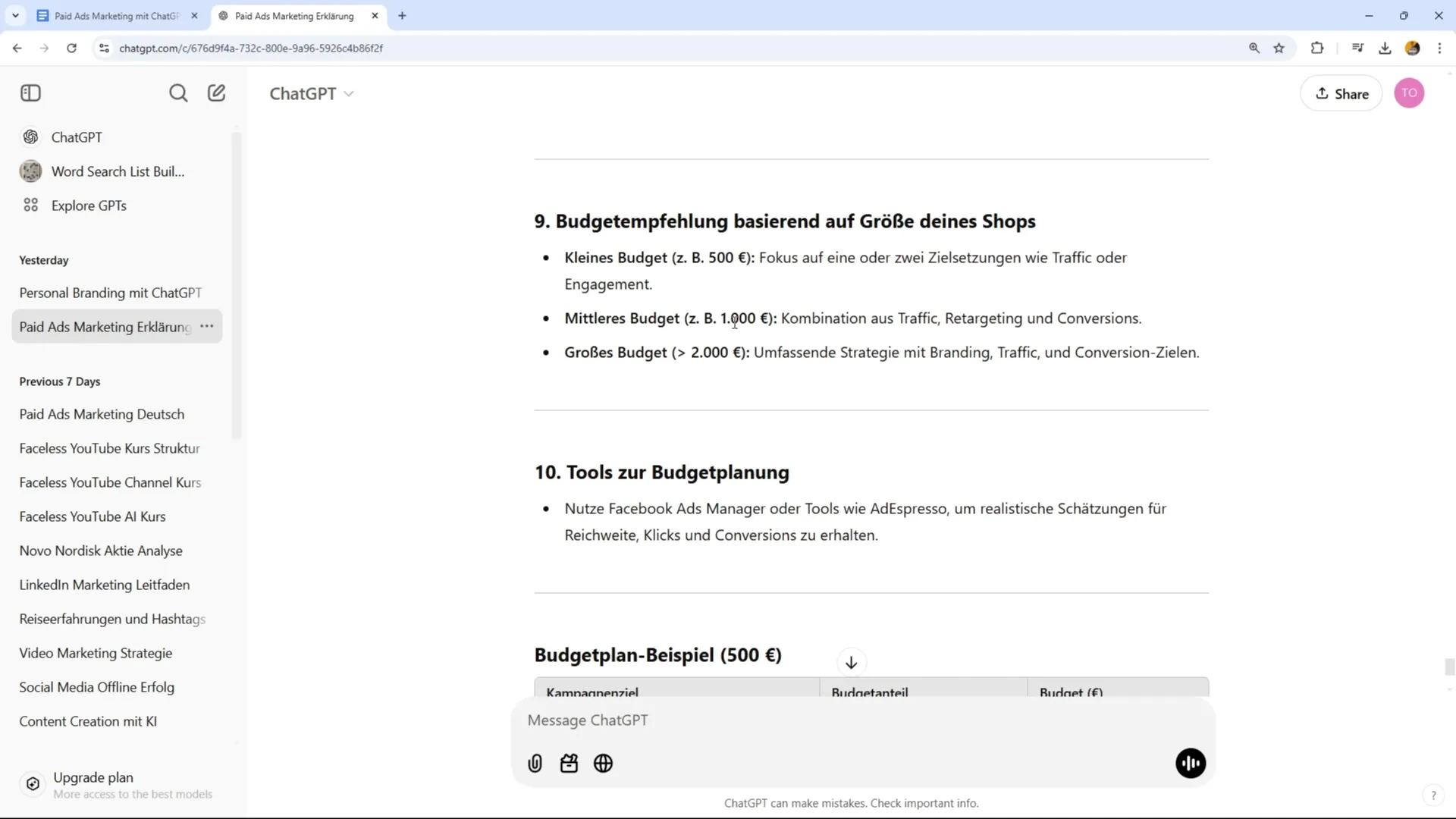The budgetingfor paid advertising is a crucial step in your marketing strategy. If you don't set your budget optimally, you can waste money and miss out on valuable opportunities. In this guide, I will show you how to efficiently set your advertising budget for different platforms to achieve maximum results.
Key Findings
- A higher budget allows for better testing of ads.
- Consider campaign goals and target audiences when budgeting.
- Calculate key metrics such as Return on Ad Spend (ROAS) for informed decision-making.
- Your ads should always be profitable to avoid losses.
Step-by-Step Guide
To create an effective budget for your PaidAds, follow these steps:
1. Define the campaign goal
Before setting the budget, it is important to define your campaign goal. Do you want to create brand awareness, drive traffic to your website, or generate direct sales? Each goal has a different cost factor.

2. Conduct audience analysis
After defining the campaign goal, the target audience is the next important component. Make sure you know exactly who you want to reach. Consider demographic characteristics, interests, and behaviors. A well-defined target audience helps you advertise more effectively.
3. Follow budget recommendations
For an optimal start, consider a minimum budget of €500 per month. The distribution could look as follows: €150 for brand awareness, €150 for traffic, and €200 for conversion ads. This distribution offers you a balanced strategy.

4. Calculate the Return on Ad Spend (ROAS)
The ROAS is a crucial metric for evaluating your advertising expenses. Calculate the ROAS by dividing the revenue by the total investment. If you invest €500 and generate €2000 in revenue, your ROAS is 4:1. Aim to maximize profits, not just revenue.
5. Monitor the conversion rate
The conversion rate should be between 1 and 3%. This means that within 100 clicks, there should be one to three purchases. If your conversion rate is below that, it's time to adjust your strategy.
6. Optimize the budget based on initial results
Let your campaign run for at least two weeks to a month to see initial results. Use the data to adjust your budget. If you notice that some ads are not converting, turn them off or optimize them.
7. Consider the campaign duration
The choice of the duration of your campaign has a significant impact on the required budget. For short campaigns that last only a week, higher daily budgets make sense. For longer campaigns, you can spread the budget out for more time to test.
8. Monitor competitors and trends
Keep an eye on your competitors' advertising spending and current trends in your industry. This way, you can choose the right time for your campaign and budget accordingly. Consider seasonality and special events that may impact advertising costs.
9. Test formats
Test different ad formats – images, videos, or carousel ads. These formats have different costs and performance. It may be that videos bring more engagement while text ads might be cheaper.
10. Keep profitability in mind
Ensure that your ads remain profitable. Every euro spent on advertising should at least bring you €1 in profit. Otherwise, you should reconsider your strategy and possibly adjust declining budgets or disable ads.
Summary – Setting a Budget for Paid Ads
This guide shows you how to set a strategic budget for your paid ads. Understand the importance of goal definition, audience analysis, and calculating metrics such as ROAS to make your advertising successful. Keep an eye on trends, test different formats, and ensure your ads stay profitable.
FAQ
How do I set my budget for Facebook Ads?Define your campaign goal, analyze your target audience, and use budget recommendations as a guideline.
What is ROAS and why is it important?ROAS is the revenue you generate for your advertising expenses. It helps you assess the profitability of your campaigns.
How long should I run my campaign?A minimum duration of two weeks to a month is reasonable to gather reliable data.
How do I test different ad formats?Experiment with images, videos, and text ads to find out which format delivers the best results.
How do I find the right target audience?Analyze demographic characteristics, interests, and behaviors to accurately define your target audience.


